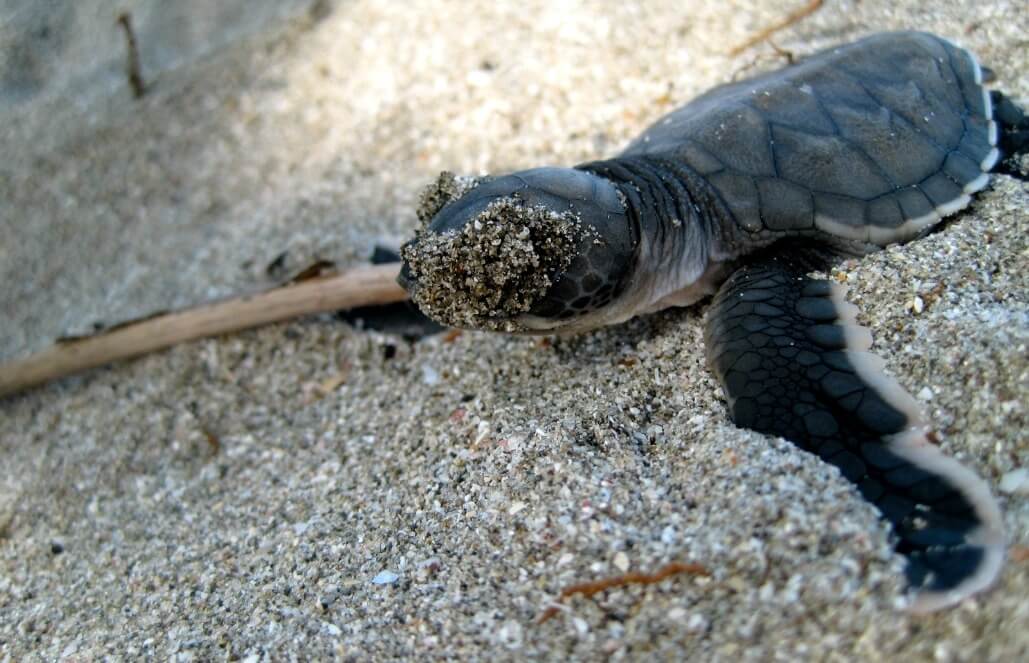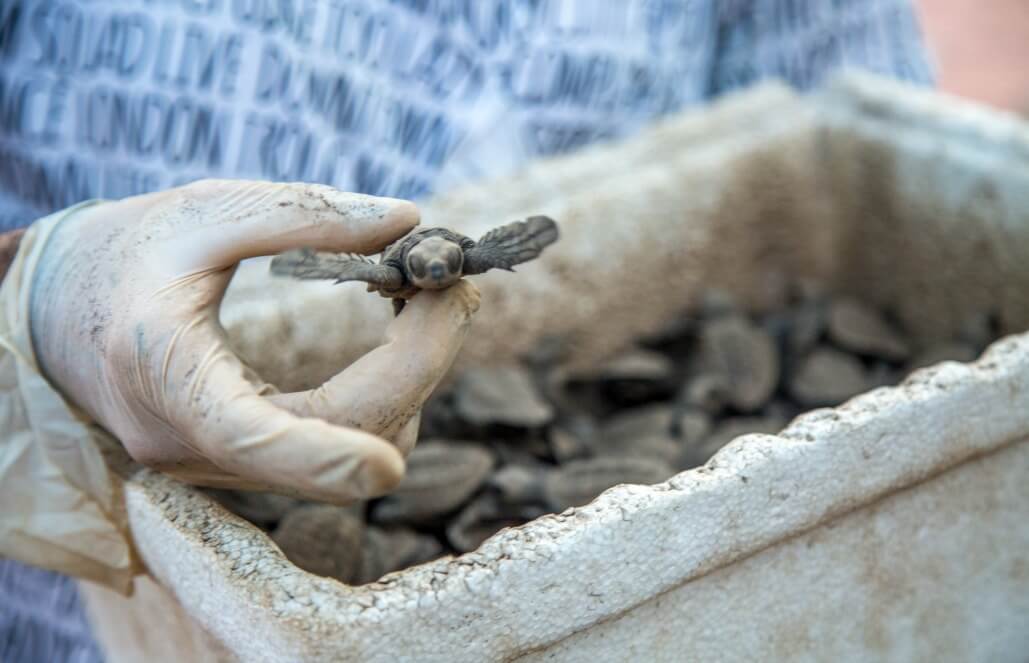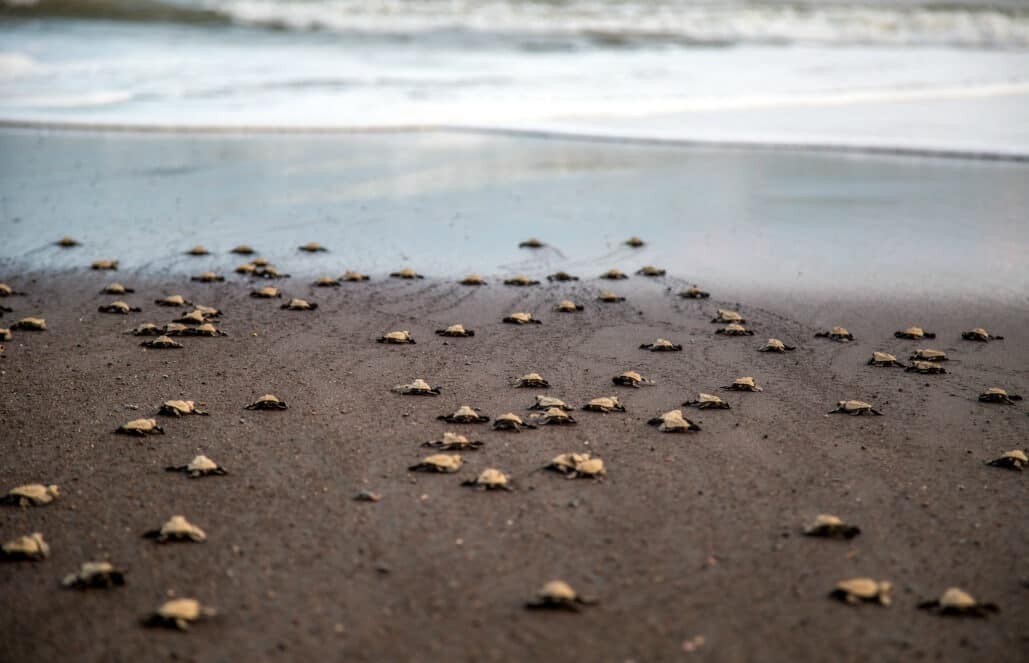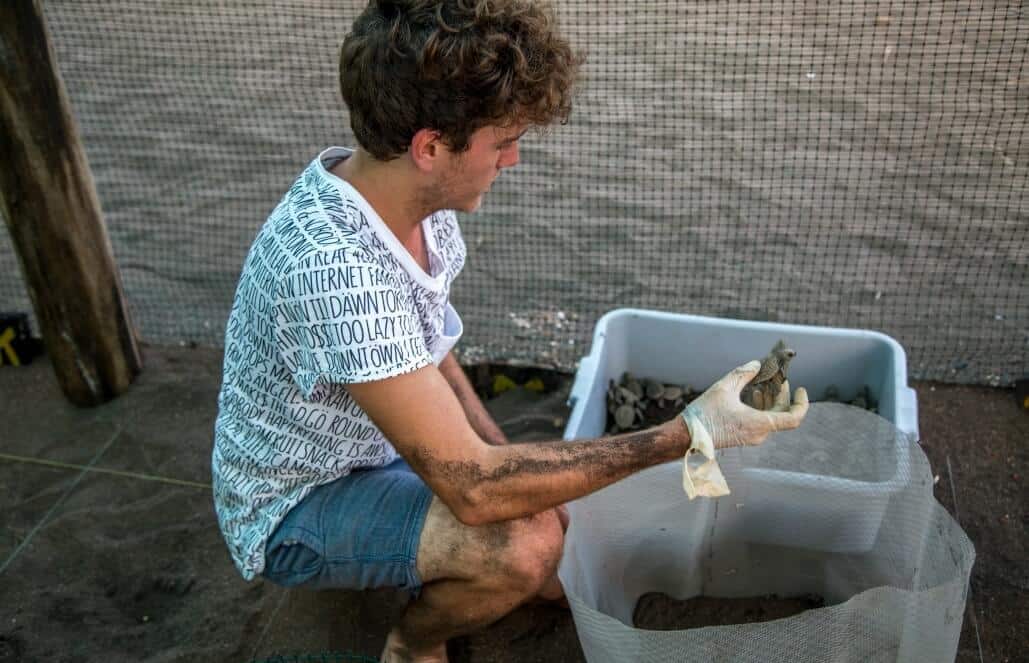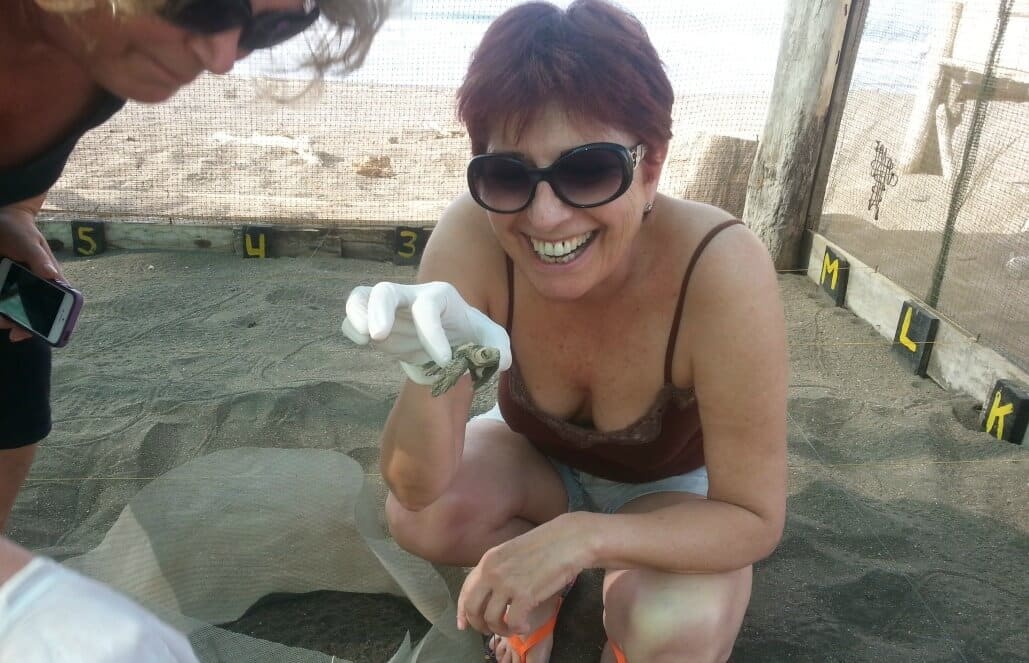Sinking your toes into the sand of a remote Costa Rican beach, watching sea turtles heave themselves out of foamy waves – it sounds dreamy, but this could be your reality. Costa Rica is one of the most important locations for sea turtle conservation. GoEco’s Sea Turtle Conservation program lets you take part in protecting these vulnerable creatures while living the adventure of a lifetime.
Curious to know more? Here’s all the information you need about Costa Rica’s sea turtles.
What Are The Different Types Of Sea Turtles In Costa Rica?
Five different species of sea turtles nest on the beaches in Costa Rica.
Leatherbacks. These are the largest sea turtles, growing up to 180 centimetres long and weighing as much as 500 kilograms. They are also the most widely distributed of the sea turtles, appearing in waters as far north as Alaska and as far south as the southern tip of Africa. Despite their size they have delicate jaws, so they typically dine on soft foods like jellyfish.
Hawksbill. These colorful turtles are critically endangered as a result of their beautiful shells. They have been hunted to the brink for tortoiseshell materials. Hawksbill turtles are small and only grow to 70 or 80 centimetres. They usually live in and around coral reefs, where they feed on sponges. Their name comes from their narrow beak which helps them forage for food in reef crevices.
Green turtles. Graceful creatures that are actually a dark brown color, green turtles are particularly common in Tortuguero National Park, the most significant green turtle nesting ground in the Caribbean. Green turtles have a beak with serrated edges, which allows them to scrape up algae and nibble on seagrasses. The grow to around one meter in length and weigh between 110 and 190 kilograms.
Loggerhead. Loggerheads have large, powerful jaws which are perfect for crushing the shells of whelks and conchs. Because of this, they have large heads – hence their name. They grow to between 80-110 centimetres and can weigh up to 170 kilograms.
Olive ridley turtles. The most common sea turtle in Costa Rica, and the smallest. They usually only measure around 60 centimeters. In the right conditions, thousands of these turtles can nest at the same time on Costa Rica’s beaches, an event called an arribada. They are omnivorous and eat plants and small animals, such as algae, shrimp and mollusks.
What Is The Conservation Status Of Sea Turtles In Costa Rica?
The five different species of sea turtles in Costa Rica have varying conservation statuses. Hawksbill are the rarest and are classed as critically endangered. Olive ridley and leatherback turtles are vulnerable, while green turtles and loggerheads endangered.
Human activities are the biggest threat to sea turtles. As well as hunting for their shells, eggs, and meat, sea turtles are sometimes killed by fishing gear. Their habitats are also being destroyed by coastal developments and erosion.
When Do Sea Turtles Hatch In Costa Rica?
Once turtle eggs are laid, it takes about 45-65 days before they hatch. The hatching season typically runs from April until December. Turtles laying their eggs, and the mad dash of hatchlings toward the ocean, are incredible sights to witness.
Four out of the five species of sea turtles lay their eggs in Tortuguero National Park. The nesting season runs from March through to October. Leatherbacks are the first to arrive, starting off the season in March. Loggerheads drop in a little later, nesting from July to October. Hawksbills come and go the whole time, from March all the way through to October. They come in smaller numbers, so you are less likely to see these pretty turtles. Green turtles also nest between June and October.
The fifth sea turtle, the olive ridley, nests between September and October. They come to shore in flurries of up to 8,000 turtles at once. They arrive on the Pacific Coast of Costa Rica, on the opposite side of the country to Tortuguero.
What Is Being Done To Help Save The Sea Turtles?
However, conservation measures are still necessary. Research and education are at the forefront of sea turtle conservation efforts. The focus is on studying the sea turtles to learn more about their behaviors, and educating local communities on the importance of protecting them.
Helping the turtles to hatch by patrolling the beaches to defend against poachers and predators, running hatcheries where stray eggs can hatch safely are also key activities.
Eco tourism is another important aspect of turtle conservation. As well as teaching people about the beauty and importance of sea turtles, activities such as volunteer programs and night walks to see the turtles laying their eggs can help fund conservation projects and inspire people to support conservation initiatives.
How Can You Help?
You can volunteer your time to help with sea turtle conservation in Costa Rica. Volunteers play an important role in collecting information and data on sea turtles, as well as patrolling nesting sites, working in hatcheries, and rescuing turtles in trouble.
As a volunteer, you’ll also help with beach cleanups and environmental education in the community. All of these actions are crucial for protecting the turtles and ensuring they have a safe environment for laying their eggs.
Working in the stunning Tortuguero National Park, you’ll be able to study and practice Spanish, learn more about Costa Rican culture, and explore one of the most beautiful and biodiverse areas in Central America.
This volunteer program is an incredibly rewarding experience for all nature lovers. Join the fight to save the sea turtles and enroll in this program today, or browse more volunteer programs in Costa Rica.


